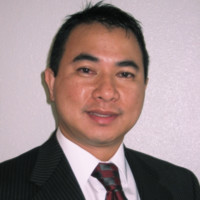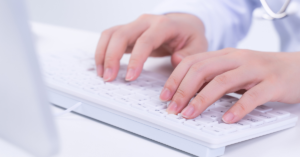Can you imagine a world where patient records are never lost and charts don’t get misplaced? A world where you don’t have to squint at illegible handwriting? That’s exactly what electronic medical records (EMRs) in nursing bring to the table. For Filipino doctors, clinics, healthcare professionals, private practitioners, medical centers, and telemedicine providers, the shift to an efficient, paperless EMR system is no longer optional. It’s essential.
With traditional paper-based records, errors are more common, and time is wasted searching for misplaced files. And miscommunication can lead to severe consequences. A paperless EMR system eliminates these risks. It offers real-time access to patient information, streamlined documentation, and improved collaboration among healthcare providers. Nurses can update patient records instantly, reducing delays in treatment. And thus ensuring that every decision is based on the most up-to-date information.
A study published in PubMed highlights how EMRs improve clinical workflow, enhance patient safety, and reduce documentation errors. The digital format ensures that medical histories, treatment plans, and prescriptions are stored securely, preventing data loss and making retrieval seamless. Additionally, EMRs integrate decision-support tools, flagging potential medication interactions or allergies to prevent adverse effects.
Yet, despite these advantages, some healthcare facilities remain reliant on paper records. Why? Fear of change, cost concerns, and resistance to new technology often play a role. However, the benefits far outweigh the initial effort required for transition. Hospitals and clinics that adopt EMRs report increased efficiency, fewer medical errors, and better patient outcomes. The future of healthcare is digital, and EMRs are the key to transforming nursing practices for the better. Isn’t it time for every healthcare provider to embrace this change?
The Role of Electronic Medical Records in Nursing
1. Enhancing Patient Safety and Accuracy
Medication errors account for a significant percentage of preventable medical mistakes. With electronic medical records in nursing, prescription errors drop drastically. EMRs provide automated alerts for potential drug interactions, allergies, and incorrect dosages, ensuring nurses administer the right medication at the right time.
A report from the World Health Organization (WHO) states that electronic documentation reduces medication errors by up to 50%. When nurses have immediate access to a patient’s full medical history, they can make informed decisions faster—without flipping through endless paper files.
2. Improved Efficiency in Documentation
Documentation is an essential, yet time-consuming, part of nursing. Traditional paper charts require hours of manual work, often leading to delays in patient care. With an EMR system, documentation time is reduced by up to 45%,allowing nurses to spend more time focusing on patients rather than paperwork.
According to a study in the Journal of Nursing Administration, nurses using EMRs report fewer interruptions and increased satisfaction with their workflow. Plus, with digital records, no more lost charts or deciphering messy handwriting—everything is structured, standardized, and instantly accessible.
3. Streamlining Communication Across Departments
How often do nurses struggle with unclear physician orders or missing lab results? EMRs bridge the communication gap between nurses, doctors, pharmacists, and other healthcare providers. Real-time updates ensure that patient information is always accurate and up to date.
Instead of chasing down paper reports, nurses can instantly retrieve test results, medical histories, and care plans. This leads to faster decision-making and better patient outcomes.
Challenges Nurses Face With Traditional Record-Keeping
Paper Records Are Prone to Errors and Loss
One of the biggest drawbacks of traditional paper-based records is their vulnerability to human error. Misfiled documents, missing pages, and illegible handwriting create serious risks in patient care. According to research, up to 70% of hospital errors are linked to documentation issues. A single misplaced chart can result in delayed treatments, incorrect medication administration, or even misdiagnosed conditions. Additionally, paper records are susceptible to physical damage, such as spills, fires, or natural disasters.
With electronic medical records (EMRs), patient data is securely stored, automatically backed up, and easily retrievable. No more sifting through stacks of files or worrying about lost paperwork. Nurses can quickly access and update records in real time, significantly reducing the risk of medical errors.
Time-Consuming and Cumbersome Processes
Nurses already juggle a heavy workload, from administering medications to coordinating with physicians and attending to patients’ needs. Manually updating handwritten charts takes up valuable time, often leading to delays in care. Searching for specific patient information in physical files adds to the inefficiency, creating bottlenecks in hospital workflows.
EMRs eliminate this time-consuming burden by automating documentation, allowing nurses to update records instantly. With features like speech-to-text transcription and pre-filled templates, data entry becomes seamless, giving nurses more time to focus on direct patient care rather than paperwork.
Difficulty in Accessing Patient History
A fragmented record-keeping system can create major challenges when a patient visits multiple departments or clinics. Without a unified system, retrieving a patient’s full medical history is often slow and inefficient, leading to delayed diagnoses and misinformed treatment decisions.
EMRs provide a comprehensive, real-time view of a patient’s medical history, ensuring that nurses always have access to critical data such as previous treatments, allergies, lab results, and medication history. This streamlined access enables faster, more informed care decisions and significantly improves patient safety.
Key Features of an Effective EMR System for Nursing
1. Intuitive and Easy-to-Use Interface
An effective EMR system should be designed with usability in mind, ensuring that nurses and medical staff can navigate it effortlessly. A system that is too complex or cluttered can lead to frustration, inefficiency, and errors, ultimately affecting patient care. Nurses work in high-pressure environments, so an intuitive interface with clear layouts, simple menus, and minimal manual data entry is essential. When an EMR is easy to learn and use, nurses can quickly access patient records, document treatments, and update information without unnecessary delays.
2. Integration With Scheduling and Billing
A seamless workflow is critical in healthcare settings, and an effective EMR system should integrate with patient scheduling, billing, and telemedicine platforms. This integration eliminates the need for manual data entry across multiple systems, reducing errors and administrative burdens. For example, when a patient schedules an appointment, their information should automatically sync across all platforms, ensuring that medical staff can easily track upcoming visits and past consultations. Additionally, billing integration simplifies insurance claims, payment processing, and financial reporting, making operations smoother for both healthcare providers and patients.
3. Mobile Accessibility
With the fast-paced nature of healthcare, nurses often need to access patient records on the go. A mobile-friendly EMR system allows them to retrieve and update information in real time, whether they are at a bedside, in a consultation room, or responding to an emergency. Mobile accessibility reduces wait times, improves response efficiency, and ensures that nurses have immediate access to critical patient data, even outside traditional workstations.
4. Secure Data Storage and Compliance
In an era of increasing cybersecurity threats, patient records must be protected against unauthorized access and data breaches. A high-quality EMR system offers encrypted data storage, secure backups, and strict access controls to safeguard sensitive medical information. Compliance with data privacy regulations, such as the Philippine Data Privacy Act, ensures that healthcare facilities meet legal and ethical standards in protecting patient confidentiality. A secure EMR system provides peace of mind for both healthcare professionals and patients by keeping medical data safe and accessible only to authorized personnel.
How to Transition to an EMR System
Step 1: Assess Your Needs
Before implementing an electronic medical records (EMR) system, it’s crucial to evaluate the challenges your facility faces with traditional paper-based records. Are documentation errors leading to medical mistakes? Is retrieving patient files time-consuming? Do staff members struggle with lost or misplaced records? Identifying these pain points helps in choosing an EMR system that addresses your specific operational issues. Consider whether you need automated workflows, real-time access to patient data, or better interdepartmental communication to enhance efficiency. A well-informed assessment lays the foundation for a smooth transition.
Step 2: Choose the Right EMR Provider
Not all EMRs are designed equally, so selecting the right provider is essential. Look for features that match your facility’s needs, such as automated appointment scheduling, medication tracking, lab integration, and billing management. Ensure the EMR system is user-friendly and compatible with your existing software to avoid workflow disruptions. A customizable solution tailored to clinics, hospitals, or telemedicine providers will yield better results. Scheduling a demo with a provider allows you to see how the system functions in real-world scenarios and ensures it aligns with your operational goals.
Step 3: Train Your Staff
A successful EMR transition depends on how well-trained your staff is. Many EMR adoption failures stem from a lack of proper training, leading to frustration and inefficiencies. Choose a provider that offers comprehensive, hands-on training and 24/7 technical support. Training should include interactive sessions, user manuals, and troubleshooting guidance to boost confidence and adoption rates among healthcare professionals. A well-trained team ensures a smoother implementation process and reduces resistance to change.
Step 4: Implement Gradually
Switching to an EMR system doesn’t have to be abrupt. A gradual transition reduces errors and allows for adjustments before full implementation. Start with one department or unit, gather feedback, and address any technical challenges. Once the initial rollout is successful, expand the system across the entire facility. A phased approach minimizes disruptions, ensuring a seamless transition from paper to digital records.
Why Filipino Healthcare Professionals Need EMRs Now
The future of healthcare is digital, and the benefits of electronic medical records in nursing are undeniable. With a well-implemented EMR system, Filipino healthcare professionals can improve patient care, reduce errors, and streamline operations.
The time to go paperless is now. Explore how Doktor EMR can help your clinic or hospital transition smoothly to a fully digital system.
Learn more about EMR benefits: Watch videos
See how it works: Schedule a demo
Discover our full EMR solutions: Visit our website
By transitioning to a digital system, nurses can focus on what they do best—caring for patients. Ready to revolutionize your practice?





